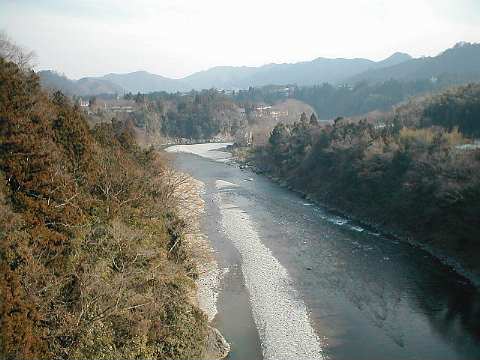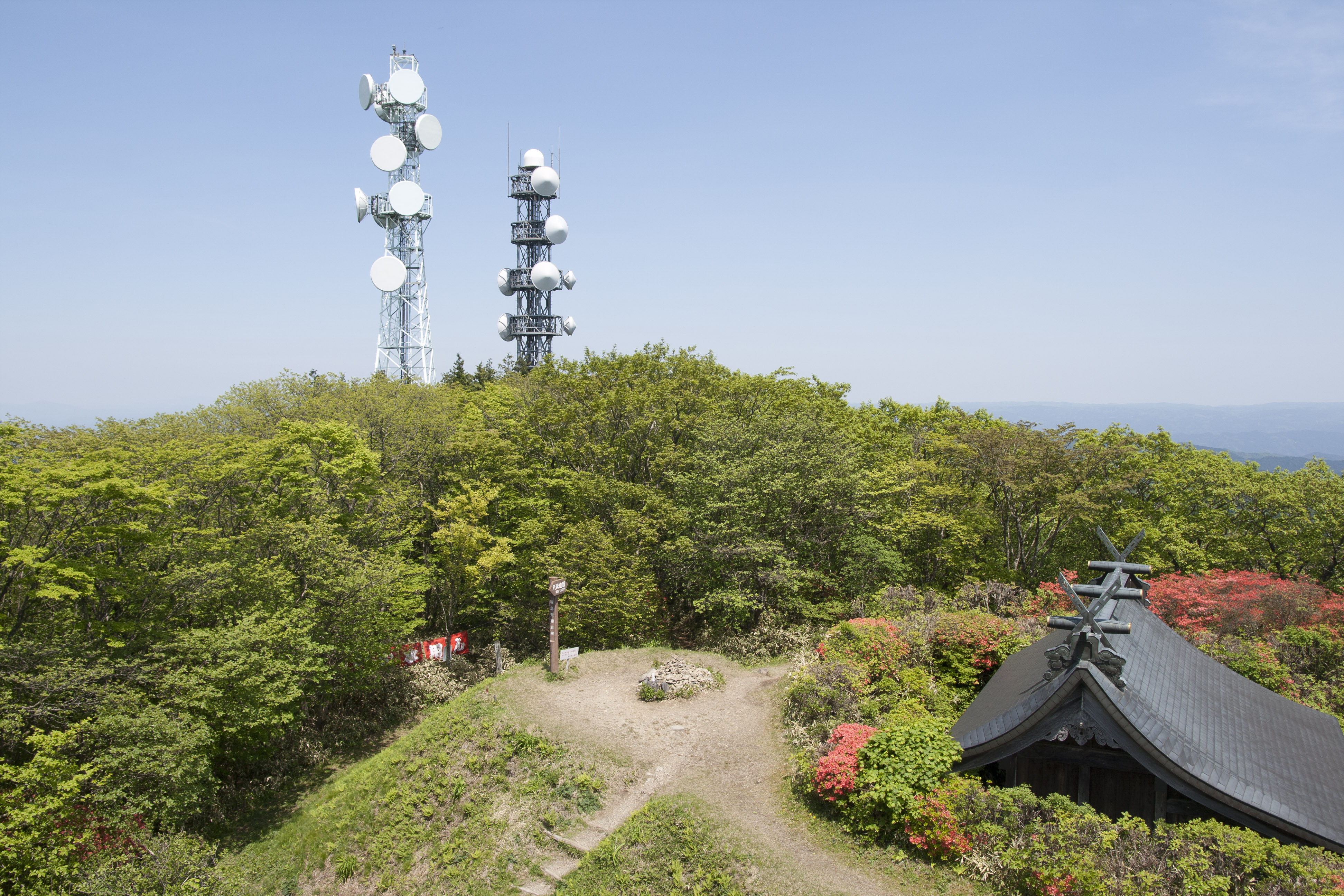|
Kantō Plain
The , in the Kantō region of central Honshu, is the largest plain in Japan. Its 17,000 km2 covers more than half of the region extending over Tokyo, Saitama Prefecture, Kanagawa Prefecture, Chiba Prefecture, Gunma Prefecture, Tochigi Prefecture, and Ibaraki Prefecture.Encyclopedia of Japan, Kōdansha Geography The northern limit borders on the Abukuma Highlands, Mount Yamizo, Yamizo Mountain Range, Ashio Mountain Range, and a volcanic field associated with the Nasu Volcanic Belt. The western coincides with the Kantō Mountains, Kantō Mountain Range, and the southern edge is defined by the Bōsō Peninsula, the Miura Peninsula, Miura Hills, Tokyo Bay, and Sagami Bay. The Kashima Sea and Kujūkuri Beach define the eastern end of the plain. Most of its rivers originate in the northern or western mountain ranges and flow east or southeast into the Pacific Ocean, Tokyo Bay, or Sagami Bay. In the central part of the plain is the Tone River; in the northern part the Watarase Riv ... [...More Info...] [...Related Items...] OR: [Wikipedia] [Google] [Baidu] |
Bōsō Peninsula
The is a peninsula that encompasses the entirety of Chiba Prefecture on Honshu, the largest island of Japan. It is part of the Greater Tokyo Area. It forms the eastern edge of Tokyo Bay, separating it from the Pacific Ocean. The peninsula covers approximately . Description The Bōsō Peninsula is defined by the Pacific Ocean to its east and south, Tokyo Bay to the west, and the Edo and Tone rivers to the north. The Bōsō Hill Range forms the backbone of the south of the peninsula, and much of the area is hilly. Mount Atago in Minamibōsō and Kamogawa is the highest point on the peninsula with an altitude of . From south to north the Bōsō Hill Range gives way to the Shimōsa Plateau, which covers much of the area of northern Chiba Prefecture, and ends in the lower areas around the Tone River. The northern and western parts of the Bōsō Peninsula are highly urbanized. The Shimōsa Plateau and the coastal lowlands and interior river valleys are chiefly used for rice cul ... [...More Info...] [...Related Items...] OR: [Wikipedia] [Google] [Baidu] |
Sagami River
The is a river in Kanagawa and Yamanashi Prefectures on the island of Honshū, Japan. The upper reaches of the river in Yamanashi prefecture are also sometimes known as the , and the portion near the river mouth as the . The river overall was sometimes referred to as the from the sweetfish (''ayu'') which were once abundant in its waters. The Sagami River drains Lake Yamanaka, the largest and easternmost of the Fuji Five Lakes in Yamanashi Prefecture. It loops northwest, then northeast through Yamanashi, before following a generally southerly course to exit into Sagami Bay of the Pacific Ocean between the cities of Hiratsuka and Chigasaki. It is dammed at several locations along the way, forming a number of reservoir lakes, the largest of which are Lake Sagami and Lake Tsukui. The river has had to re-cut its course several times due to repeated eruptions of Mount Fuji, and river terraces are in evidence along its upper reaches in Yamanashi. As the river crosses Kanaga ... [...More Info...] [...Related Items...] OR: [Wikipedia] [Google] [Baidu] |
Tama River
The is a major river in Yamanashi Prefecture, Yamanashi, Kanagawa Prefecture, Kanagawa and Tokyo Prefectures on Honshū, Japan. It is officially classified as a Class 1 river by the Government of Japan, Japanese government. It is long, and has a basin. The river flows through the Greater Tokyo Area, on the dividing line between Tokyo and Kanagawa Prefectures. In Tokyo, its banks are lined with parks and sports fields, making the river a popular picnic spot. Course The Tama's source is on Mt. Kasatori in Koshu, Yamanashi, Koshu in Yamanashi Prefecture. From there, it flows eastward into mountainous western Tokyo, where the Ogōchi Dam forms Lake Okutama. Below the dam, it takes the name Tama and flows eastwards through Chichibu Tama Kai National Park to the city of Ōme, Tokyo, Ōme. It then flows southeast between Tama Hills and Musashino Terrace. At Hamura, Tokyo, Hamura is the source of the historic Tamagawa Aqueduct built by the Tamagawa brothers in 1653 to supply w ... [...More Info...] [...Related Items...] OR: [Wikipedia] [Google] [Baidu] |
Arakawa River (Kantō)
The is a long river that flows through Saitama Prefecture and Tokyo. Its average flow in 2002 was 30 m3/s. It originates on Mount Kobushi in Saitama Prefecture, and empties into Tokyo Bay. It has a total catchment area of . The river is one of Tokyo's major sources of tap water, and together with the Tone River, accounts for around 80% of Tokyo's water supply as of 2018. The Okubo water purification plant takes water from the river. History Attempts to control flooding of the Arakawa River have been made since the area that is now Tokyo became the de facto capital of Japan during the Edo period. Following a major flood in 1910 that damaged a large part of central Tokyo, a long drainage canal was constructed between 1911 and 1924. In 1996 an agreement was signed to make it a "sister river" of the Potomac River in the eastern United States. This means that officials and volunteers from both river areas collaborate with each other. In popular culture This river is also ... [...More Info...] [...Related Items...] OR: [Wikipedia] [Google] [Baidu] |
Kuji River (Kantō)
is a river in Fukushima Prefecture, Tochigi Prefecture and Ibaraki Prefecture, Japan. It rises at the northern slope of Mount Yamizo, where the border of these three prefectures is located, and flows into Pacific Ocean at Hitachi, Ibaraki, Hitachi and Tokai, Ibaraki, Tokai in Ibaraki Prefecture. It has a length of and a drainage area of , and is designated as a Class A river. History The name ''Kuji'' is thought to be derived from the phonetically similar word for whale (''kujira'' in Japanese). ', one of the existent ''fudoki'', states: "There were a hill that resembled a whale [''kujira'']. Then the emperor named the land ''Kuji''." The river is known for Ayu sweetfish, ayu fishing. In 2006 it had the second largest catch of ayu in Japan after the Naka River (Tochigi Ibaraki), Naka River, which is also located in Ibaraki Prefecture. A fishing weir (梁 ''yana'') for tourists is installed along the river in Daigo, Ibaraki, Daigo. Fukuroda Falls are located on the Taki River (� ... [...More Info...] [...Related Items...] OR: [Wikipedia] [Google] [Baidu] |
Naka River (Tochigi Ibaraki)
The is a river in eastern Honshu, Japan. It flows through the prefectures of Tochigi and Ibaraki and empties to the Pacific Ocean. More than 50 species of fish live in the river, including dace, chum salmon, ayu, and herring. The Japanese government categorizes it as a Class 1 river. The river has a length of , and drains an area of , including parts of neighboring Fukushima Prefecture is a Prefectures of Japan, prefecture of Japan located in the Tōhoku region of Honshu. Fukushima Prefecture has a population of 1,771,100 () and has a geographic area of . Fukushima Prefecture borders Miyagi Prefecture and Yamagata Prefecture .... Its source is at Nasu-dake in Nikkō National Park. Naming * References External links Rivers of Tochigi Prefecture Rivers of Ibaraki Prefecture Rivers of Fukushima Prefecture Rivers of Japan {{Japan-river-stub ... [...More Info...] [...Related Items...] OR: [Wikipedia] [Google] [Baidu] |
Kinu River
, is a river on the main island of Honshu in Japan. It flows from the north to the south on the Kantō plain, merging with . At 176.7 km in length, it is the longest tributary of Tone-gawa. From ancient times, it has been known to cause floods. The river starts in Kinu swamp in the city of Nikkō, Tochigi, within Nikkō National Park. 2015 Flood Due to heavy rainfall for three consecutive days, on 10 September 2015, the river bank was breached, causing a flood, resulting in the death of two people and several more injuries. In Joso city, homes and infrastructure were damaged. See also * Kinugawa Onsen, a spa town within Nikkō * Keno Province , also known as Kenu Province, is an old province of Japan prior to the Nara Period.Tsunoda, Ryūsaku ''et al.'' (1951). ''Japan in the Chinese Dynastic Histories: Later Han through Ming dynasties,'' p. 18 n25. Keno was located in the area of Toch ... References External links (confluence with Tone River) Rivers of Ibaraki Pr ... [...More Info...] [...Related Items...] OR: [Wikipedia] [Google] [Baidu] |
Watarase River
The is a major river in the northern Kantō region of Japan. A tributary of the Tone River, it is in length and drains an area of . ( official page) (Retrieved on June 29, 2009) Its source is at Mount Sukai on the boundary of the city of |
Tone River
The is a river in the Kantō region of Japan. It is in length (the second longest in Japan after the Shinano River) and has a drainage area of (the largest in Japan). It is nicknamed Bandō Tarō (); ''Bandō'' is an obsolete alias of the Kantō Region, and ''Tarō'' is a popular given name for an oldest son. It is regarded as one of the "Three Greatest Rivers" of Japan, the others being the Shinano River in northeastern Honshu and the Ishikari River in Hokkaido. Geography The source of the Tone River is at () () in the Echigo Mountains, which straddle the border between Gunma and Niigata Prefectures in Jōshin'etsu Kōgen National Park. The Tone gathers tributaries and pours into the Pacific Ocean at Cape Inubō, Choshi in Chiba Prefecture. Tributaries Major tributaries of the Tone River include the Agatsuma, Watarase, Kinu, Omoi, and the . The Edo River branches away from the river and flows into Tokyo Bay. History The Tone River was once know ... [...More Info...] [...Related Items...] OR: [Wikipedia] [Google] [Baidu] |
Pacific Ocean
The Pacific Ocean is the largest and deepest of Earth's five Borders of the oceans, oceanic divisions. It extends from the Arctic Ocean in the north to the Southern Ocean, or, depending on the definition, to Antarctica in the south, and is bounded by the continents of Asia and Australia in the west and the Americas in the east. At in area (as defined with a southern Antarctic border), the Pacific Ocean is the largest division of the World Ocean and the hydrosphere and covers approximately 46% of Earth's water surface and about 32% of the planet's total surface area, larger than its entire land area ().Pacific Ocean . ''Encyclopædia Britannica, Britannica Concise.'' 2008: Encyclopædia Britannica, Inc. The centers of both the Land and water hemispheres, water hemisphere and the Western Hemisphere, as well as the Pole of inaccessi ... [...More Info...] [...Related Items...] OR: [Wikipedia] [Google] [Baidu] |
Kujūkuri Beach
is a sandy beach that occupies much of the northeast coast of the Bōsō Peninsula in Chiba Prefecture, Japan. Kujūkuri Beach is a popular swimming and surfing destination for inhabitants of Greater Tokyo. The beach is protected as part of Kujūkuri Prefectural Natural Park. The beach is approximately long, making it the second longest beach in Japan. Geography Kujūkuri Beach extends in the shape of an arc from Cape Gyōbumi in Asahi to the north to Cape Taitō in Isumi, Chiba Prefecture to the south. The beach is relatively straight, in contrast to the typically irregular coastlines of Japan. The tides and the Kuroshio Current create sand deposits along the length of the beach which form sand dunes of to . Kujūkuri Beach has no reef. The coastal region of the beach is the north-eastern end of Kuroshio Current influence in Japan. Municipalities Kujūkuri Beach extends across ten municipalities in Chiba Prefecture. They include: *Asahi * Sōsa * Yokoshibahikari * ... [...More Info...] [...Related Items...] OR: [Wikipedia] [Google] [Baidu] |




